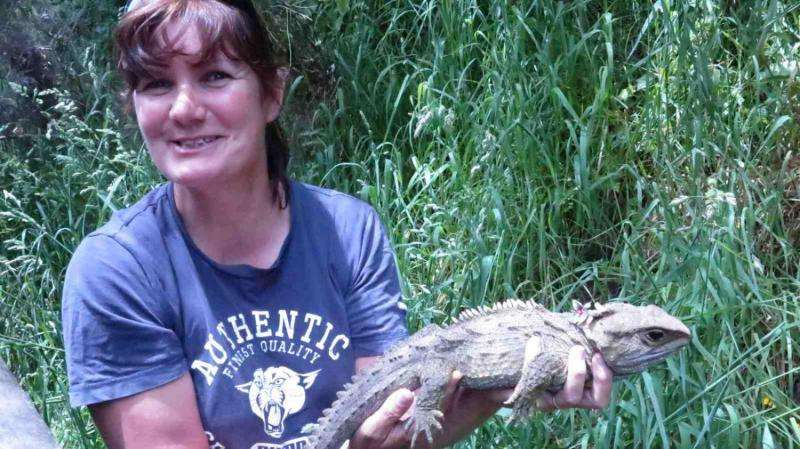Bigger is better for Zealandia's tuatara

The size and health of the tuatara population was assessed this month in a joint project by Victoria University of Wellington and Zealandia—the first time many of the iconic creatures will have been handled since the species were introduced to Zealandia 10 years ago.
"Over three nights we managed to track down 69 tuatara, of which 21 were born at Zealandia at some point over the past decade," says Associate Professor Nicky Nelson from Victoria's School of Biological Sciences. "This is fantastic news and confirms that tuatara are successfully breeding in Zealandia."
A decade of no disruption
The tuatara at Zealandia are the first wild population of tuatara on mainland New Zealand in over 200 years. In 2005, 70 tuatara were transferred from Stephens Island in the Marlborough Sounds and another 130 released in 2007.
Over the decade, baby tuatara have been spotted at Zealandia, the first in 2009. This was thought to be the first case of tuatara naturally breeding on the New Zealand mainland since they were reintroduced.
Healthy and hearty
The recent survey—carried out 10 years to the day that the first tuatara arrived—found a number of females about to lay eggs, in addition to the 21 sanctuary-born tuatara.
"We now know the group is breeding annually, a sign of a healthy population," says Dr Nelson.
"We also found the tuatara have increased in size. The heaviest tuatara was over one kilogram—1010 grams, more than the recently weighed tuatara on Stephens Island. The interesting thing is that he had not grown in length since he was released 10 years ago, he just got bulkier.
"One of the longest tuatara had a 30 centimetre long tail—the length of our rulers. He grew three centimetres in a decade, and put on over 250 grams."
The survey team also discovered that the tuatara still have ticks, which translocated with them from Stephens Island.
"The ticks are hanging in there after 10 years—we weren't sure they would survive in a less dense population like Zealandia," says Dr Nelson. "There are no major issues identified with having ticks, and the young tuatara don't seem to have them."
Team effort
The survey group spent three days searching release sites, known burrows and other sites to weigh and measure the endemic reptiles.
"The group was made up of people from Zealandia, Victoria University, volunteers and iwi—it was a really great community effort," says Dr Nelson.
"This survey has given us a good understanding of how the tuatara are doing and a base to build on for future surveys."
The tuatara population at Zealandia is likely to be resurveyed every five years.
Provided by Victoria University of Wellington



















